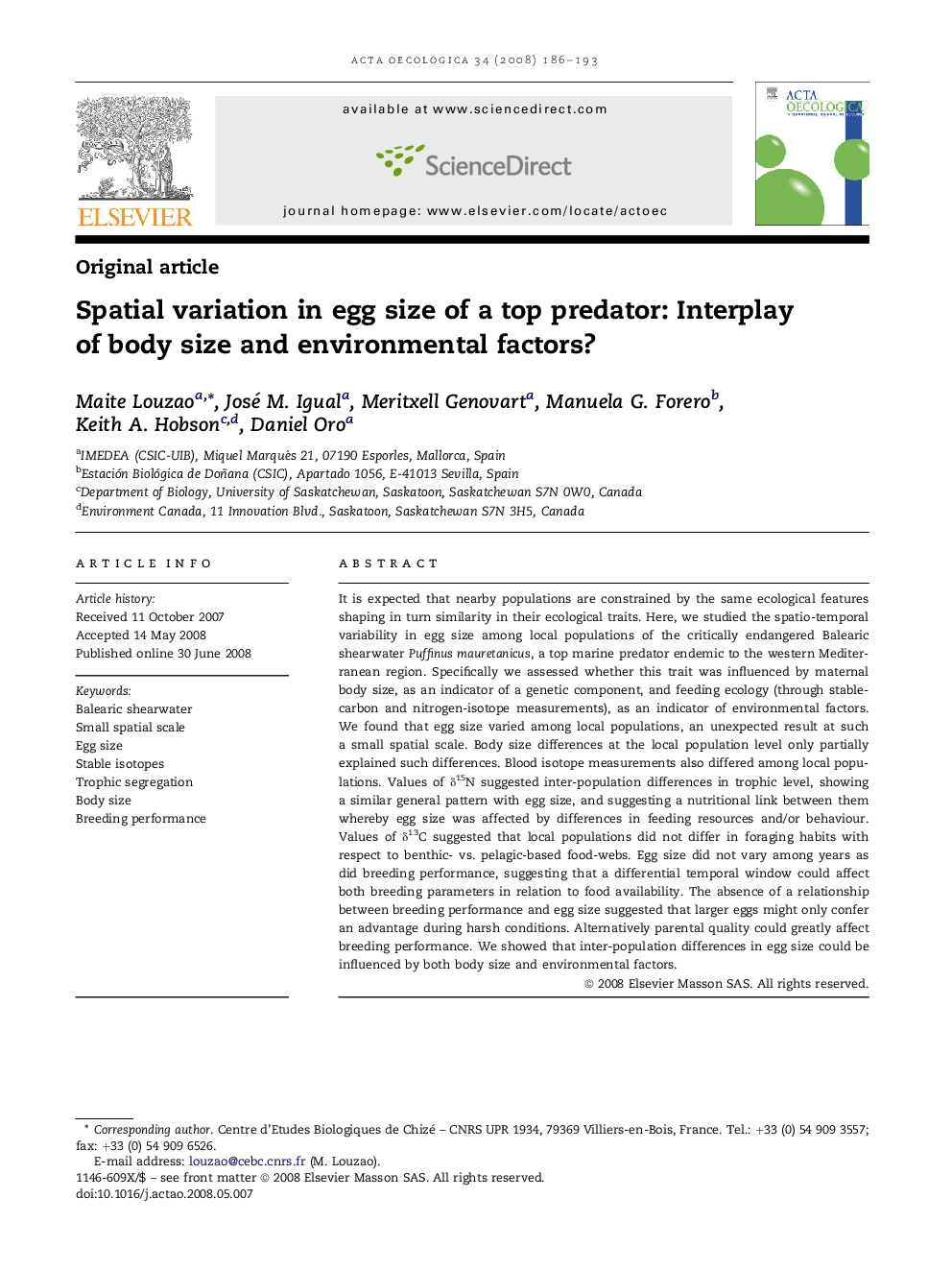| Article ID | Journal | Published Year | Pages | File Type |
|---|---|---|---|---|
| 4381522 | Acta Oecologica | 2008 | 8 Pages |
Abstract
It is expected that nearby populations are constrained by the same ecological features shaping in turn similarity in their ecological traits. Here, we studied the spatio-temporal variability in egg size among local populations of the critically endangered Balearic shearwater Puffinus mauretanicus, a top marine predator endemic to the western Mediterranean region. Specifically we assessed whether this trait was influenced by maternal body size, as an indicator of a genetic component, and feeding ecology (through stable-carbon and nitrogen-isotope measurements), as an indicator of environmental factors. We found that egg size varied among local populations, an unexpected result at such a small spatial scale. Body size differences at the local population level only partially explained such differences. Blood isotope measurements also differed among local populations. Values of δ15N suggested inter-population differences in trophic level, showing a similar general pattern with egg size, and suggesting a nutritional link between them whereby egg size was affected by differences in feeding resources and/or behaviour. Values of δ13C suggested that local populations did not differ in foraging habits with respect to benthic- vs. pelagic-based food-webs. Egg size did not vary among years as did breeding performance, suggesting that a differential temporal window could affect both breeding parameters in relation to food availability. The absence of a relationship between breeding performance and egg size suggested that larger eggs might only confer an advantage during harsh conditions. Alternatively parental quality could greatly affect breeding performance. We showed that inter-population differences in egg size could be influenced by both body size and environmental factors.
Related Topics
Life Sciences
Agricultural and Biological Sciences
Ecology, Evolution, Behavior and Systematics
Authors
Maite Louzao, José M. Igual, Meritxell Genovart, Manuela G. Forero, Keith A. Hobson, Daniel Oro,
